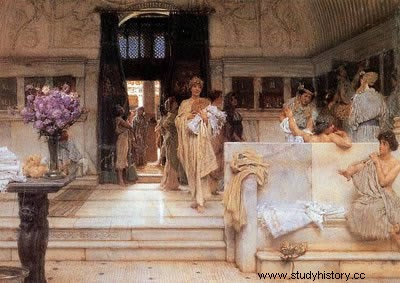
Hygiene and bathroom in Ancient Rome
What I report below is one of the posts funniest of all those I wrote for the site Notizie.it, as it concerns the unhealthy habit of ancient Roman citizens to throw their needs out of the window without even bothering to see if some unfortunate passed by at that moment.
The poet Juvenal.
[lightbox link =”https://www.pilloledistoria.it/wp-content/uploads/2014/10/untitled1.bmp” thumb =”https://www.pilloledistoria.it/wp-content/uploads/2014/ 10 / untitled1-300 × 225.bmp "width =" 300 ″ align ="center" title ="A section of the Cloaca Massima in Rome" frame ="true" icon ="image" caption =”A section of the Cloaca Maxima a Rome "] You know what was one of the most frequent and embarrassing dangers in ancient Rome ?
No, I am not referring to robberies, muggings, murders and violence, which were also the order of the day, but to something much less harmful, although not very pleasant to suffer, of which the great Latin poet Juvenal
This happened mainly due to the lack of water inside the houses; most of the citizens stocked up at the public fountains, but there were no drainage pipes and this made normal daily practices uncomfortable.
There were also the more playful (and disrespectful) Romans who used to go to do their business in cemeteries, on the tombs.
This uncivil practice led to nice forms of protection of the tombstones, especially through inscriptions which were to act as a deterrent against the customer on duty, like this: "You see (the mound) has a monument of nettles:get away you who are about to do your business. It's not safe to do them here! ”.
The disposal of waste products and black water took place through an elaborate sewer system, that of the sewers; the most important drainage channel, the one in which all the garbage of the city flowed was the famous Cloaca Maxima, the final part of which is still preserved (you can see a part of it in the second photo ) (Article taken from:Notizie.it).
